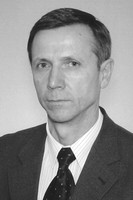Billiards as adaptive sport
Фотографии:
ˑ:
Teoriya i praktika fizicheskoy kultury №3 2017, pp.86-88
UDC 799.6
PhD, Professor V.A. Vishnevskiy
Surgut State University, Surgut
Comparative analysis of the mental and physiological performance and activity rates of the 12-17 years-old students (including the special health group students) engaged in billiards on a permanent basis showed benefits of the sport for their health, with all other variations traced by the study being interpreted as associated with age, gender and other specifics. The generally positive effects of the academic billiards courses on the special health group students and good long-term adaptation progress showed by the Children and Youth Sport Reserve School students engaged in billiards on a permanent basis, plus modest workloads of the game on the bodily functions – make the game of billiards recommendable as a quite accessible, interesting and beneficial academic adaptive sport discipline.
Keywords: billiards, benefits for students, adaptive sport.
References
- Zakhar'eva N.N., Barchukova G.V. Vliyanie predstartovykh sostoyaniy na sportivnuyu rezultativnost bilyardistov [The Influence of Prestarting Conditions on Sports Performance of Billiard Players]. Teoriya i praktika fiz. kultury, 2013, no. 12, pp. 72-74.
- Titovskiy A.V., Mamonova O.V. Bilyard v fizicheskom vospitanii studentov-ekonomistov [Billiards in physical education of students of economics]. Izvestiya Tulskogo gos. universiteta. Fizicheskaya kultura. Sport, 2015, no. 4, pp. 59-65.
- Kholodov J.K. Teoriya i metodika fizicheskoy kultury i sporta [Theory and methods of physical culture and sports]. Moscow: Akademiya publ., 2014, 480 p.
- Abernethy B., Neal R.J., Koning P. Visual-perceptual and cognitive differences between expert, intermediate, and novice snooker players. Applied Cognitive Psychology, 1994, vol. 8, I. 3, pp. 185-211.
- Memmert D., Simons D.J., Grimme T. The relationship between visual attention and expertise in sports. Psychology of Sport and Exercise, 2009, vol. 10, I. 1, pp. 146-151.



 Журнал "THEORY AND PRACTICE
Журнал "THEORY AND PRACTICE